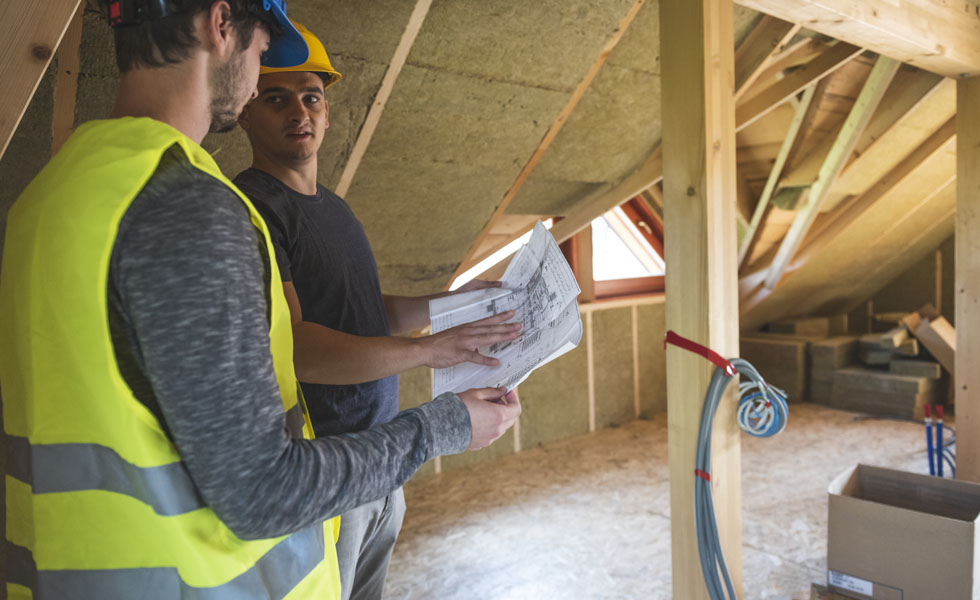We Need to Talk About Insulate Britain’s Demands for our Homes
As Insulate Britain makes its voice heard, retrofit expert Paul Testa outlines that efficient insulation can only work when it’s part of a whole house plan

Insulate Britain has repeatedly made headlines for blocking roads in recent weeks, protesting the need to improve the quality and energy efficiency of our homes. But while it’s the group’s actions that have drawn vast media attention, it is their message that we need an eco homes revolution that deserves wider recognition and examination.
The campaigners want insulation to be installed in all social housing in Britain by 2025, and for the government to introduce a retrofit strategy by 2030 to help the UK meet its net zero target. Insulate Britain is not alone in advocating these measures - in fact, several industry groups want a retrofit strategy to be introduced - but as the group calls for a mass insulation of leaky UK homes, is focusing on insulation really the best way to fix our housing stock?
I need to start by saying that I completely agree with Insulate Britain’s core aims and demands. They are incredibly brave; sacrificing their freedom to raise awareness of the increasing urgency of improving our housing stock. My writing here is not to argue against the work that they’re doing, but to provide some nuance that hopefully supports and strengthens their aims.
How Important is Efficient Insulation?
We therefore need to move away from oversimplifying retrofit down to a list of measures.
Paul Testa
Insulation is easily the biggest measure that we need to undertake to improve our existing housing stock. Whether that’s in the roof, walls or floor, most of our housing loses huge amounts of heat and energy through the fabric of the building. Therefore, it will always be a key element of a retrofit programme.
However, we’ve seen before with schemes like the Green Deal and the Green Homes Grant that compartmentalised retrofit measures can become too single-measure driven and simplistic.
Previous schemes have led to poorly-installed external wall insulation that isn’t sufficient for the long-term performance of the house, with poor detailing leading to cold bridges, condensation and even water ingress. Other schemes have led to poorly-installed cavity wall insulation in inappropriate walls or locations that, again, have resulted in worse conditions for the occupants than before the “improvement”.
We therefore need to move away from oversimplifying retrofit down to a list of measures. Buildings are complex systems, and unintended consequences are common and often worse than the cold house they replaced.
Get the Homebuilding & Renovating Newsletter
Bring your dream home to life with expert advice, how to guides and design inspiration. Sign up for our newsletter and get two free tickets to a Homebuilding & Renovating Show near you.
The Importance of a Whole House Solution
All retrofits should start with a whole house retrofit strategy that understands the risks, the hierarchy of what’s most important, and suggests the best measures and the best sequence to do these in.
Retrofit strategies must include insulation, but also windows and doors; airtightness and ventilation. Moisture from weather and from building occupation will need to be considered throughout because missing one of these aspects can lead to, at best, reduced actual performance and, at worst, very unhealthy and uncomfortable homes.
What we have found with previous schemes is that they provide funding for individual measures (external wall insulation; cavity insulation; replacement boilers etc). These measure-focused proposals then become dominated by particular manufacturers and suppliers that already have a strong hold on the market - even if it means that the products being installed aren’t the best they could be.

The Choice of Insulation is Important
When you’re considering a single measure in isolation, it’s much easier to reduce the choice to a cost judgement rather than a value judgement.
In these circumstances plastic insulations such as expanded polystyrene insulation (commonly referred to as EPS) win on cost, but can lead to other issues. EPS is a product of the petrochemical industry - it’s one of the cheapest insulations, has good thermal performance but is closed cell and, therefore, doesn’t deal with construction moisture very well. EPS is difficult to deal with as construction waste and at the end of its life it mostly ends up in landfill.
But once aspects such as embodied carbon, condensation risk, end of life disposal and the ability to mitigate overheating are considered, then materials such as wood fibre become much more attractive and are much less likely to lead to unintended consequences.
(MORE: How to Prevent Overheating in Homes)
While probably twice as expensive as EPS to buy (installation costs are similar), wood fibre insulation is made from waste from timber processing. It’s a good insulator (but not as good as EPS), it’s hygroscopic so it can absorb and re-emit moisture, and it has the ability to slow the transfer of heat into buildings in summer.
Wood fibre is also carbon negative in production and can be recycled or composted at the end of its life.
How we Move Forward
Coming all the way back round to the demands of Insulate Britain, I don’t feel at all that anything I’ve said is at odds with them. Let’s insulate our homes, but let’s make sure we do it within a considered, whole house strategy, to make sure we have low-energy homes that are healthy to live in for now and for future generations.
Architect Paul is the director of HEM Architects and a specialist in low-energy design. HEM Architects are well-versed in designing sustainable, energy-efficient new builds and extension schemes. He has also just completed an eco retrofit to his family home.
He taught the technology course for the MArch in Architecture at Sheffield University, and is a tutor for the Sustainable Architectural Studies Masters course.

